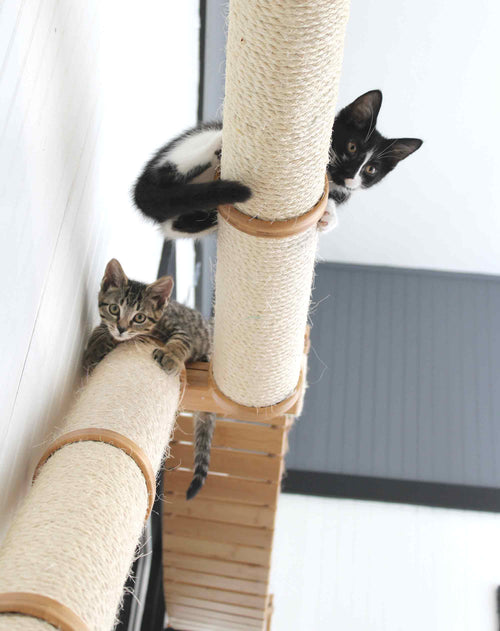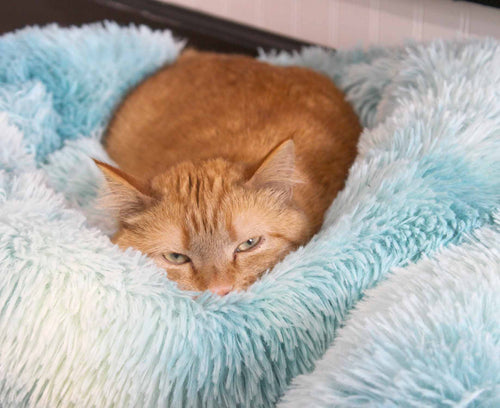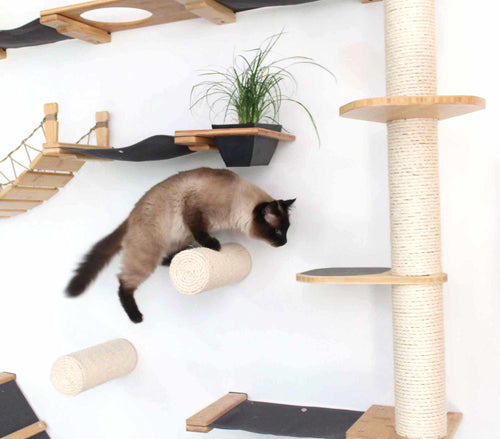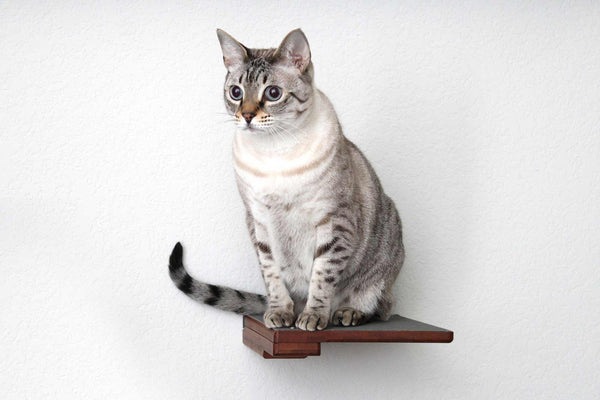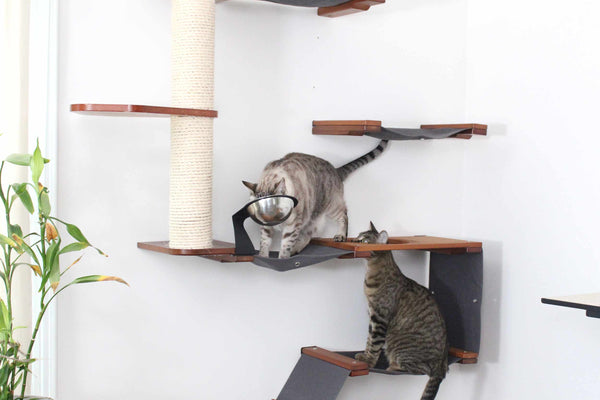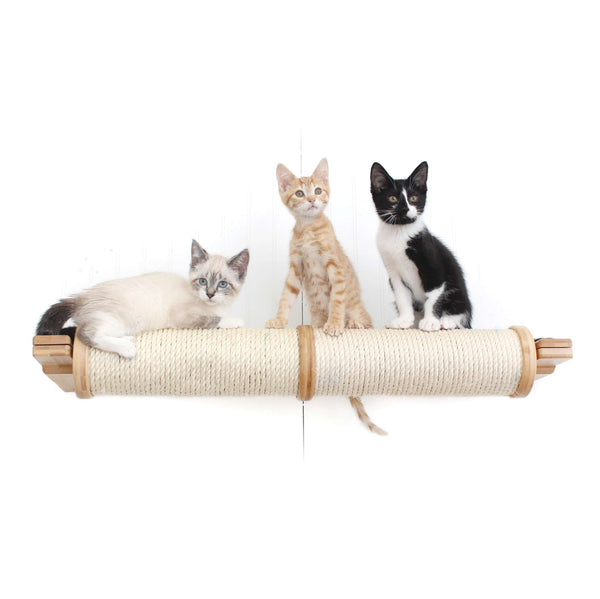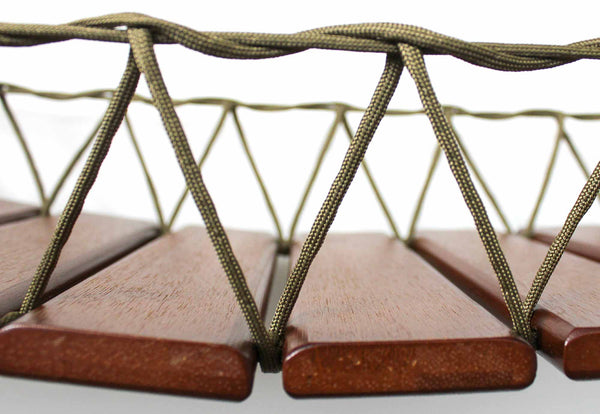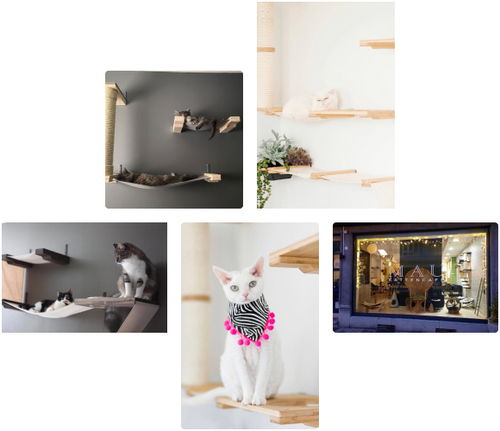I bought the slotted shelves and that and the photo gave me the impression I was getting 2 shelves but there is only one, to each their own $69.30 but more if you don't have a discount, So hope this helps anyone as dumb as me lol. I'll use it though seems like good quality and very firm.
Thank you for your feedback and for bringing this to our attention. We apologize for any confusion regarding the quantity of shelves included in the product. We strive to provide clear and accurate information for our customers.
We're glad to hear that you're satisfied with the quality of the shelf and we hope your furry friend enjoys it. Please don't hesitate to reach out if you have any further questions or concerns. Thank you for choosing our Wall Mounted Cat Shelf! -Elexis
I started looking at cat walls when we transitioned our cats from outdoors to full-time indoors. Yes, you can get a cat wall from Amazon or Wayfair for 1/3 the price, but I guarantee they won't be as high-quality as the Juggernaut. Every piece, from the shelving to the canvas to the hardware to the packaging, is clearly considered. The installation took about 5-6 hours over a couple of days with a lot of careful measuring and leveling, but everything fit together perfectly. One of our studs was a couple of inches off, so I had to get creative in a few spots. When the leaf shelves for the sisal pole were restocked, we added two of those as well (plus, another planter top / pot). It's create a fun place for the cats to play - and for them to stalk us.
Hi Josh,
Thank you so much for taking the time to leave such a detailed and positive review. We are thrilled to hear that you are happy with the quality of The Juggernaut and that it has been a great addition to your indoor cat's playtime. We take pride in providing exceptional products and we are glad to hear that it shows in every aspect of our product. Thank you for choosing The Juggernaut and we hope your cats continue to enjoy it!
-Alexandria
I was originally concerned about whether our cats would make use of this bridge. Sure enough, our typically bold tabby, Sasha, approached with extreme caution. But after a few days of coaxing with treats, the bridge (and the hammock at the other end) have become favorite spots of hers. Our cats have been anxious about having their own space when we're all together in the living room, so this is a huge quality of life improvement for us all.
I'm impressed with the quality of the bridge components, and after fussing around with a few of the other products we ordered, it was intuitive to assemble. I was worried that I'd have to modify our window trim since we planned on spanning the window with the bridge, but the bridge planks were perfectly offset to fit in front of our trim.
Even though we got the largest bridge possible and it's mounted across a window, it still doesn't feel like it takes up too much space or closes off the room. We're all delighted with this bridge!
Thank you so much for taking the time to write such a kind review. We're thrilled to hear that Sasha has taken a liking to her new bridge and hammock. It's always great to hear when our products improve the quality of life for both pets and their owners. We pride ourselves on the quality and ease of assembly for our products, so we're glad it met your expectations. And we're happy to hear that the bridge fits perfectly in your space without feeling too bulky. Thank you again for choosing our product and for sharing your experience with us. -Elexis
Every cat likes to get to the top and perch for awhile. That would be after scratching all the way to the top. They love to scratch this.
Hi Valerie,
We're so happy to hear that our Wall Mounted Cat Climbing Pole is a hit with your feline friends. Thank you for taking the time to leave a review, we appreciate it!
-Alexandria
My 2 Siberians enjoy their activity wall immensely. So much so that I ended up adding more options and filling the entire wall. They absolutely love playing and napping on all the levels. I am most pleased with the quality and safety of the design. This kitty family is super happy with all that catastrophic cats has to offer!
Hi Diann,
We're thrilled to hear that your Siberians are loving their activity wall and that you ended up adding more options for them. Your installation looks great and like a fun space for them! We always want to make sure our products are of the highest quality and safety for our feline friends. Thank you for choosing our Slanted Cat Scratcher for Wall and for being a loyal customer.
-Alexandria
Hi there,
Thank you for leaving such a pawsome review! We are thrilled to hear that your cats are loving the Slanted Cat Scratcher as part of their wall. We hope it provides them with endless hours of fun and scratching satisfaction. If you ever need anything, please don't hesitate to reach out to us. -Elexis



